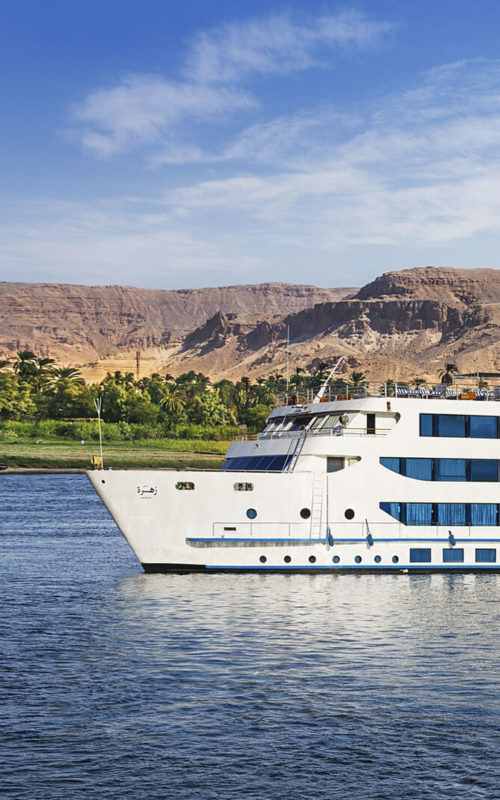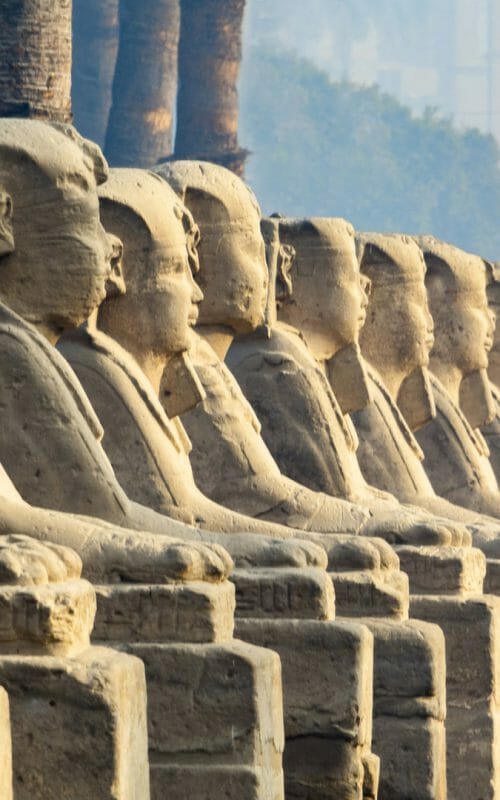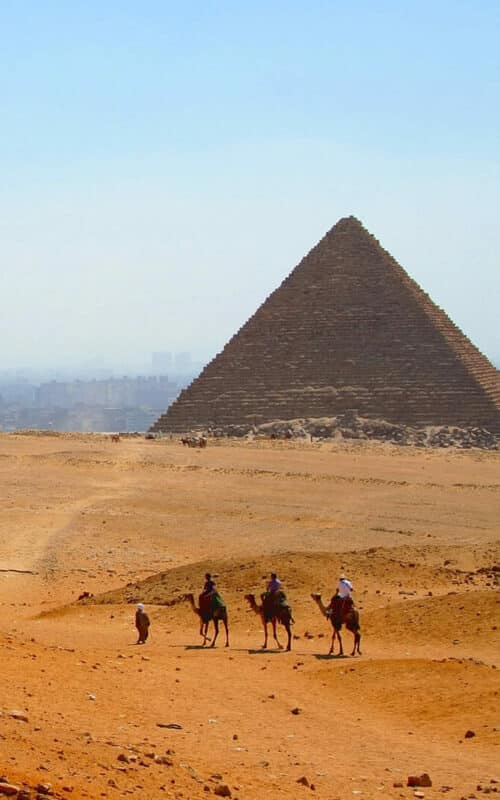When exploring Egypt over 15 years ago, I was mesmerised by the temples and tombs, and enjoyed the slow pace of cruising down the Nile from Luxor to Aswan. So, when the opportunity emerged to return in the holy month of Ramadan, I jumped at the chance to immerse myself deeper into ancient Egyptian culture, while experiencing a little more of the heart of modern-day Egypt.
Our journey started in Hurghada on the coast of the Red Sea, home to one of the best house-reefs I have ever seen, before heading to Luxor. With vibrant corals, crystal clear waters and the sun shimmering over the reef, we spent our time snorkelling with eagle rays, hundreds of angelfish, butterfly fish and pufferfish.
We travelled through an unchanging desert landscape towards Luxor until we passed through the enthralling landscape of the Nile Delta. Passing through small villages and big towns, gazing out at the verdant and green surroundings sprawling with sugarcane. Local farmers tended to their crops, villagers traded fruits and vegetables and children played after school. As the sun started to set, communities came together to prepare for their communal Iftar, the first meal of the day to break their fast.
Luxor was as mind-blowing as I remembered. Our Egyptologist Ahmed was the most captivating of guides, not only for his knowledge of traditions, customs and archaeology of ancient Egypt, but also for his open mind and passion for discussions on modern day Egypt too. Ahmed was a kind-hearted and gentile guide; after discovering his PhD was centred around the significance of ‘the heart’ in ancient Egypt, I was not surprised. His love and passion for his country and its people shone through. He truly made our trip memorable.
As we stood in the main hall of Karnak temple, I was captivated as I listened to Ahmed speak of ancient rituals and traditions, and how nature and astronomy were the guide to the lives and afterlife of this intriguing civilisation. Ahmed described how magical it is to be at Karnak temple on the Winter solstice. The sun’s rays gleaming through the hypostyle hall as it rises, celebrating the return of the sun god Amun-Ra, the beginning of the germination season and to commemorate the winter solstice.
To honour the living Pharaohs and the Gods, religious temples were constructed on the east bank of the River Nile. While Luxor and Karnak temple are vast, it was when visiting the mortuary tombs of the west bank of the River Nile, where the sun sets, that made me realise the significance of the afterlife to the ancient Egyptians. We glimpsed into the mysterious underworld of this culture as we descended into the tombs of the Pharaohs, intricate hieroglyphics and carvings filling the walls, as Ahmed described the rituals of the preparation for the afterlife, and the treasures stored with the bodies. Having our own Egyptologist was a special experience and one I would recommend to anyone visiting the Valley of the Kings and the east bank in Luxor.
Our memorable journey along the Nile concluded in the beautiful, riverside setting of Aswan and a visit to Philae temple. Dedicated to the goddess Isis and the tragic love story of her husband Osiris’ death, Philae temple is thought to be the place where Isis found Osirirs’ heart. In Egyptian mythology, the goddess of healing and magic resurrected Osiris and gave birth to their son, Horus. The mythology and beauty of these sacred monuments undeniably connects to your heart.








